Literary rating: ★★★★
Kick-butt quotient: ☆☆☆
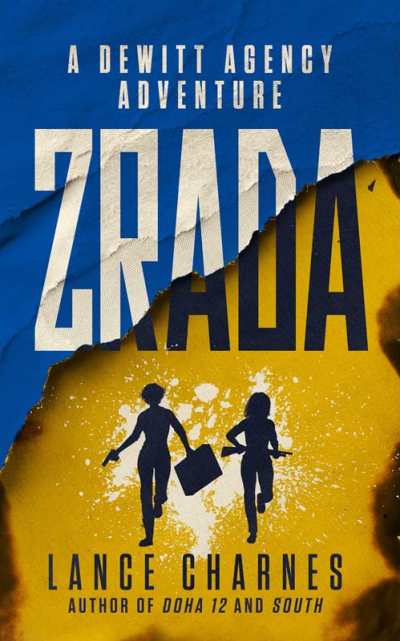 Lance Charnes and I are Goodreads friends, and I’ve read and liked two of his earlier novels; so he offered me a free review copy of this newly-published book. (There wasn’t any guarantee that I’d also like this one, but he does know my tastes pretty well.) The opener for a projected new series, this tale spins off from the author’s DeWitt Agency Files, and Carson (no first name!), the protagonist here, is an important character in the opener for the first series, The Collection. (This review avoids spoilers for Zrada, but might have some for the former novel.)
Lance Charnes and I are Goodreads friends, and I’ve read and liked two of his earlier novels; so he offered me a free review copy of this newly-published book. (There wasn’t any guarantee that I’d also like this one, but he does know my tastes pretty well.) The opener for a projected new series, this tale spins off from the author’s DeWitt Agency Files, and Carson (no first name!), the protagonist here, is an important character in the opener for the first series, The Collection. (This review avoids spoilers for Zrada, but might have some for the former novel.)
The DeWitt “Agency” operates on the edge (and sometimes over the edge) of legality in the world of super-expensive art objects trade, a milieu with a decidedly dark underbelly, which the author has thoroughly researched. But, besides the change from a male to a female protagonist, where I classified the original series as crime fiction, I’d classify this one more as straight action-adventure. The emphasis here isn’t on art, the mechanics of art swindles, etc.; the art in the story is more of a McGuffin, with the emphasis on action, danger, derring-do, weapons and explosions. (This book is set in 2016, the same year the original book was published, and the author establishes that the events in the latter have already happened.)
Ex-cop Carson (she’s divorced, but still uses her married name) is a complex, thoroughly round and very distinctive character, and a highly private person with her share of secrets. (We get to know her here in much more depth than we do in The Collection, though she was also well-realized there.) Abrasive, prickly, potty-mouthed and tough as nails, she works as a mercenary for Allyson DeWitt, and also hires out, albeit reluctantly, as an occasional hit woman for a Russian mob boss, in order to protect family who are under his gun –though she does draw a firm line in the sand against harming innocents. As that suggests, there’s more moral depth to her than you might at first think; she’s actually a person of very real integrity and honor. She’s got a conscience that she listens to; her word’s her bond, and she cares about people, though she doesn’t trust or make friends easily.
This time out, Carson’s mission is legally and ethically unobjectionable. Back in 2009, two valuable 15th-century paintings were stolen in a burglary at a German museum. Now, they’ve fallen into the hands of a Chechen fence, who’s wiling to return them to the legal owner –for 2 million Euros. If he made that exchange in any peaceful, law-abiding country with an honest and functional police force, he’d be arrested in minutes. So, he’s set up the meeting in the lawless, war-ravaged Donbass, Ukraine’s break-away Eastern region, and cut a cash-strapped (but well-armed) rebel militia into the deal as his partners. The DeWitt Agency is handling the swap. Our heroine’s job is to deliver the cash safely, act as bodyguard for the museum staffer who can authenticate the paintings, and bring both of the latter back intact, come hell or high water.
Besides being obviously combat-capable, she landed the assignment because she speaks both Ukrainian and Russian; though raised in Canada, she’s of Ukrainian stock (her maiden name was Tarasenko). As the book opens, she, the museum expert, and the Agency’s local “associate” and his two minions are pulling into the meeting place. Her nerves are on edge; a LOT of wealth is going to be on the table here, and she’s surrounded by hungry, desperate strangers (or people she knows to be morally dubious) for many miles around. (And readers who know Ukrainian won’t be reassured by the book title; it’s the word for “betrayal”….)
Here as in The Collection, Lance writes in the present tense; this takes a moment or two of getting used to if your mind is expecting past tense. But I’ve encountered this technique before in a number of books, so adjusted quickly; and it does create a sense of “you-are-there” immediacy. The plotting has its twists and turns, but it’s mostly quite believable; it’s also focused on one strand, though from different perspectives, and tautly compressed in time, occupying just nine days. Narration is in third-person, but in the vocabulary of whatever character is the current viewpoint one (usually Carson, if she’s present).
For me, it wasn’t a quick read; the author’s prose style is straightforward, but there are a lot of Slavic personal and place names (a character list and real-world map of the geographical setting is provided) and references to unfamiliar-to-me types of guns and military hardware to wade through, and I found myself reading more carefully to pick up details of description and action. However, it’s a very gripping, involving read which quickly engaged me emotionally. The narrative pace itself is quite fast, and while the action isn’t “non-stop” (any book in which it actually is would by definition be pretty shallow otherwise, which this one definitely isn’t!), there’s a lot of it, steadily punctuating the narrative. Vivid, realistic and well-realized action scenes are one of this author’s fortes.
An even more important one is development of nuanced characters who come to life as understandable people, on both sides of the country’s civil war. For instance, the militia characters are not cartoon villains, or necessarily “villains” at all, as such. Some characters definitely ARE villains (though not cartoonish ones), but even they may have an admixture of better qualities along with their sleaze. Fans of action heroines here will have the added plus of meeting another fighting female, ex-Ukrainian National Guard soldier Galina, who’s far from a Carson clone (she’s a developed, distinct character in her own right), but who can more than pull her weight in a combat situation.
There’s no sex here, just some passing references to past sexual activity (Carson’s trust issues and low opinion of marriage and males, which her one try at the former didn’t help, give her the ratchet towards commitment-free flings that you’d expect). A number of characters have foul mouths, often shaped by military culture (both Ukrainian and Russian have an exact parallel to the American f-word, which the author translates :-( ), but that’s realistic for the character types, and, refreshingly, not everybody does.
Despite the cruelty and greed often in evidence here, this is at its core a profoundly moral novel, whose messages (delivered by example rather than sermonizing) encourage readers to be kinder, less selfish, more honest and caring in their treatment of other people. My main quibble was with decisions by a couple of characters that, IMO, served the plot rather than being in character and/or very smart (and Carson’s not stupid!) But that doesn’t keep me from highly recommending this to action fans.
Author: Lance Charnes
Publisher: Wombat Group Media; available through Amazon, both for Kindle and as a printed book.
A version of this review previously appeared on Goodreads.






 Goodreads author Liane Zane is a published novelist under her real name, but has adopted this pen name for her new venture into paranormal romance, beginning with this opener for a projected series. She and I are Goodreads friends, so I accepted her offer of a free review copy, with no guarantee of a favorable one. PNR as such isn’t typically my thing (nor is “romance” in general, in the book trade sense); but both supernatural fiction and action adventure are, and I could easily approach this book in those terms. I’m also a sucker for a well-drawn action heroine who kicks butt and takes names –and here we have not just one but three such ladies.
Goodreads author Liane Zane is a published novelist under her real name, but has adopted this pen name for her new venture into paranormal romance, beginning with this opener for a projected series. She and I are Goodreads friends, so I accepted her offer of a free review copy, with no guarantee of a favorable one. PNR as such isn’t typically my thing (nor is “romance” in general, in the book trade sense); but both supernatural fiction and action adventure are, and I could easily approach this book in those terms. I’m also a sucker for a well-drawn action heroine who kicks butt and takes names –and here we have not just one but three such ladies.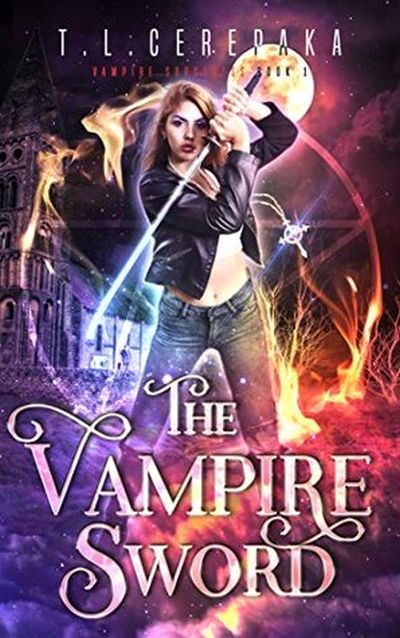 Vampires generally don’t bite their Sorcerer enemies; they just try to kill them. But a rare bitten Sorcerer becomes a half-vampire, with some vampire traits (including a blood thirst –though vampires don’t have to indulge that with human blood, despite the strong temptation) combined with ability to use magic, though just as in the Potter books, that takes training. Unfortunately for Tara, that not only poses theological conundrums for a good Baptist young lady; half-vampires are considered by both the Vampire Council and the Sorcerer’s Parliament as unnatural abominations that need to be killed on sight. And then there’s the added wrinkle that, as Council agent Lucius soon reveals, Tara’s assailant was working for a rogue Vampire Lord who has his own agenda –and it’s an agenda the rest of the world won’t like.
Vampires generally don’t bite their Sorcerer enemies; they just try to kill them. But a rare bitten Sorcerer becomes a half-vampire, with some vampire traits (including a blood thirst –though vampires don’t have to indulge that with human blood, despite the strong temptation) combined with ability to use magic, though just as in the Potter books, that takes training. Unfortunately for Tara, that not only poses theological conundrums for a good Baptist young lady; half-vampires are considered by both the Vampire Council and the Sorcerer’s Parliament as unnatural abominations that need to be killed on sight. And then there’s the added wrinkle that, as Council agent Lucius soon reveals, Tara’s assailant was working for a rogue Vampire Lord who has his own agenda –and it’s an agenda the rest of the world won’t like. Barb and I discovered evangelical Christian author Mary Connealy through her Sophie’s Daughters trilogy, partially set in Montana in the years from 1878 to 1884. Several characters who figure in her earlier Montana Marriages trilogy, of which this novel is the third, also play important roles in the later one. So we were interested in their back stories; and when I found this book in a thrift store, it was a natural purchase! (We’ve also just started reading the second installment; long story!) This means we’re reading the trilogy in reverse order; so we started with much more knowledge of the characters’ future than the original readers would have (the read was more like a visit with old friends). However, I’ll avoid spoilers in this review. (Obviously, though, it might contain “spoilers” for the earlier Montana Marriages novels.)
Barb and I discovered evangelical Christian author Mary Connealy through her Sophie’s Daughters trilogy, partially set in Montana in the years from 1878 to 1884. Several characters who figure in her earlier Montana Marriages trilogy, of which this novel is the third, also play important roles in the later one. So we were interested in their back stories; and when I found this book in a thrift store, it was a natural purchase! (We’ve also just started reading the second installment; long story!) This means we’re reading the trilogy in reverse order; so we started with much more knowledge of the characters’ future than the original readers would have (the read was more like a visit with old friends). However, I’ll avoid spoilers in this review. (Obviously, though, it might contain “spoilers” for the earlier Montana Marriages novels.)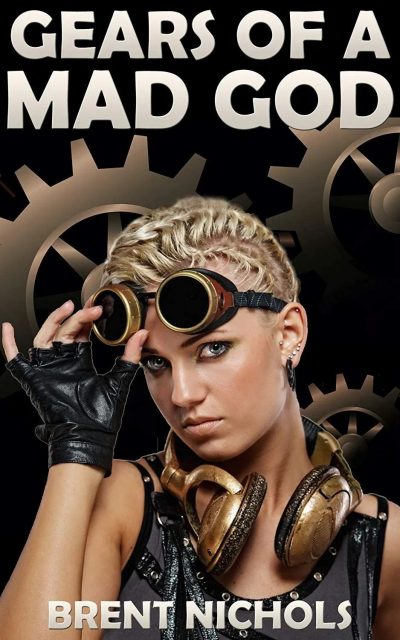 Early 20th-century pulp-fiction author Howard Philips Lovecraft created a substantial corpus of writing, mainly in the short story format and mostly in the form of horrific science fiction which in many ways reads like classic supernatural fiction. The most enduring body of his work has been the novellas and stories making up what has come to be called his Cthulhu Mythos, based on the premise that the prehistoric Earth was dominated by the Great Old Ones, or Elder Gods, malevolent and repulsive, but very powerful and dangerous, alien beings who were ultimately dethroned by another alien race, and whose hidden remnants want to regain their past dominance. A number of Lovecraft works present the idea that these beings have an evil and often murderous cult of human worshipers, handed down from the dawn of mankind, who seek to further their return to power. Numerous later writers have been inspired by HPL’s example to create their own pastiches and spin-offs of the Mythos. Brent Nichols’ self-published Gears of a Mad God novella series (there are six in all), of which this book –set in Canada in May 1921, mainly on Vancouver Island– is the opener, is one of these spin-offs. One of my Goodreads friends gave this one a favorable review; and since I’m a Lovecraft fan and the novella is free for Kindle and relatively short at 98 pages, I downloaded it.
Early 20th-century pulp-fiction author Howard Philips Lovecraft created a substantial corpus of writing, mainly in the short story format and mostly in the form of horrific science fiction which in many ways reads like classic supernatural fiction. The most enduring body of his work has been the novellas and stories making up what has come to be called his Cthulhu Mythos, based on the premise that the prehistoric Earth was dominated by the Great Old Ones, or Elder Gods, malevolent and repulsive, but very powerful and dangerous, alien beings who were ultimately dethroned by another alien race, and whose hidden remnants want to regain their past dominance. A number of Lovecraft works present the idea that these beings have an evil and often murderous cult of human worshipers, handed down from the dawn of mankind, who seek to further their return to power. Numerous later writers have been inspired by HPL’s example to create their own pastiches and spin-offs of the Mythos. Brent Nichols’ self-published Gears of a Mad God novella series (there are six in all), of which this book –set in Canada in May 1921, mainly on Vancouver Island– is the opener, is one of these spin-offs. One of my Goodreads friends gave this one a favorable review; and since I’m a Lovecraft fan and the novella is free for Kindle and relatively short at 98 pages, I downloaded it.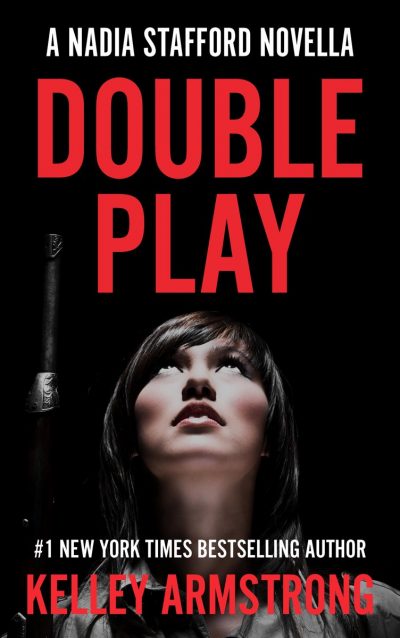 Some years ago, my Goodreads friend Mary J.L. gave the original novel of the author’s Nadia Stafford trilogy a favorable review, and that put it on my radar. As a rule, I don’t read novels that are only published in electronic format (it does have a audio version, but I don’t listen to audio books either), but I do read short e-stories; electronic publishing provides a forum for those works which no longer exists in print, what with the demise of general-circulation magazines. This tale, as a novella, occupies a middle ground, but commercially novellas are in much the same boat as short stories –a single one wouldn’t sell very well in print format. So I felt it was fair to treat it the same way, and thought it would be a good way to check out the series for myself.
Some years ago, my Goodreads friend Mary J.L. gave the original novel of the author’s Nadia Stafford trilogy a favorable review, and that put it on my radar. As a rule, I don’t read novels that are only published in electronic format (it does have a audio version, but I don’t listen to audio books either), but I do read short e-stories; electronic publishing provides a forum for those works which no longer exists in print, what with the demise of general-circulation magazines. This tale, as a novella, occupies a middle ground, but commercially novellas are in much the same boat as short stories –a single one wouldn’t sell very well in print format. So I felt it was fair to treat it the same way, and thought it would be a good way to check out the series for myself. Earlier this year, because he knew that I’d greatly liked the two previous Sabel Security novels, my Goodreads friend Seeley James gifted me with the e-book editions of all of the remaining five. This was just an act of friendly generosity, with no actual request for reviews; but I’m glad to treat them as review copies, and (as always) to review them fairly on their merits. This book’s merits earn it very high marks, which came as no surprise to me!
Earlier this year, because he knew that I’d greatly liked the two previous Sabel Security novels, my Goodreads friend Seeley James gifted me with the e-book editions of all of the remaining five. This was just an act of friendly generosity, with no actual request for reviews; but I’m glad to treat them as review copies, and (as always) to review them fairly on their merits. This book’s merits earn it very high marks, which came as no surprise to me!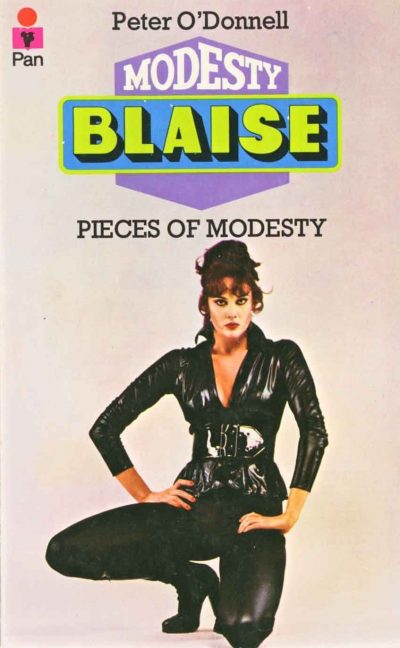 While this is the sixth installment of the series, because the stories are strictly episodic and not connected to each other, and are set at various times in the 60s, they don’t really have to be read after the first five novels to be understood and appreciated. (It would probably be best to read the first novel first, just to provide a foundation.) In a couple of stories, references are made to events, and characters reappear, which are probably drawn from the novels; but any information about past events that we need to know is supplied. Five of them are written in third person; “I Had a Date with Lady Janet” is unique in that Willie narrates it in first person, which helps to develop his character more deeply. The settings are mostly British or continental European, with one tale taking place in South America. All six adventures involve Modesty in a wide variety of situations, which illustrate various aspects of her personality and abilities; that may explain the collection’s odd title. (Don’t worry –Modesty is not dismembered!)
While this is the sixth installment of the series, because the stories are strictly episodic and not connected to each other, and are set at various times in the 60s, they don’t really have to be read after the first five novels to be understood and appreciated. (It would probably be best to read the first novel first, just to provide a foundation.) In a couple of stories, references are made to events, and characters reappear, which are probably drawn from the novels; but any information about past events that we need to know is supplied. Five of them are written in third person; “I Had a Date with Lady Janet” is unique in that Willie narrates it in first person, which helps to develop his character more deeply. The settings are mostly British or continental European, with one tale taking place in South America. All six adventures involve Modesty in a wide variety of situations, which illustrate various aspects of her personality and abilities; that may explain the collection’s odd title. (Don’t worry –Modesty is not dismembered!) “Salamander Four” is the only selection here that indicates Modesty’s openness, on occasion, to uncommitted sex (although there’s no explicit sexual content there, or in any of the stories), but the psychology of it is understandable and she comes across to me as misguided rather than callous and selfish –it’s clear that her intention isn’t knowingly to be hurtful or exploitative. Finally, “The Soo Girl Charity” is the most disturbing of the stories, in that (though without being graphic) it provides a look into the dark reality of the exploitation of women by sexual sadists, and into the even darker reality of what pounded-in cultural brainwashing of females to accept patriarchy and male domination actually does to their psyches. (I didn’t feel that the victim here being Asian indicates racism or cultural stereotyping; I think that simply reflects a reality that, at least in the 60s, traditional rural Asian cultures still tended to promote that kind of brainwashing to a greater degree than Occidental ones –even though the sexism of our culture is bad enough.)
“Salamander Four” is the only selection here that indicates Modesty’s openness, on occasion, to uncommitted sex (although there’s no explicit sexual content there, or in any of the stories), but the psychology of it is understandable and she comes across to me as misguided rather than callous and selfish –it’s clear that her intention isn’t knowingly to be hurtful or exploitative. Finally, “The Soo Girl Charity” is the most disturbing of the stories, in that (though without being graphic) it provides a look into the dark reality of the exploitation of women by sexual sadists, and into the even darker reality of what pounded-in cultural brainwashing of females to accept patriarchy and male domination actually does to their psyches. (I didn’t feel that the victim here being Asian indicates racism or cultural stereotyping; I think that simply reflects a reality that, at least in the 60s, traditional rural Asian cultures still tended to promote that kind of brainwashing to a greater degree than Occidental ones –even though the sexism of our culture is bad enough.) It took me about six years after reading the series opener to get back to the adventures of one of my favorite action heroines, Seeley James’ Pia Sabel; but I only wish I’d done so a lot sooner! Some of my comments in my
It took me about six years after reading the series opener to get back to the adventures of one of my favorite action heroines, Seeley James’ Pia Sabel; but I only wish I’d done so a lot sooner! Some of my comments in my  Although I haven’t read much pirate-themed fiction, I find the premise interesting; so I’ve had my eye on this historical novel ever since the BC library (where I work) acquired it. It definitely didn’t disappoint! Set mostly in the early 1720s, with some stage-setting in the years leading up to those, this action-packed tale follows the life and adventures of first-person narrator Nancy Kington (b. ca. 1704), the daughter of a Bristol merchant, who finds herself packed off to the family’s plantation in Jamaica at the age of 15, and is subsequently led by circumstances to voluntarily sign articles on a pirate ship.
Although I haven’t read much pirate-themed fiction, I find the premise interesting; so I’ve had my eye on this historical novel ever since the BC library (where I work) acquired it. It definitely didn’t disappoint! Set mostly in the early 1720s, with some stage-setting in the years leading up to those, this action-packed tale follows the life and adventures of first-person narrator Nancy Kington (b. ca. 1704), the daughter of a Bristol merchant, who finds herself packed off to the family’s plantation in Jamaica at the age of 15, and is subsequently led by circumstances to voluntarily sign articles on a pirate ship.